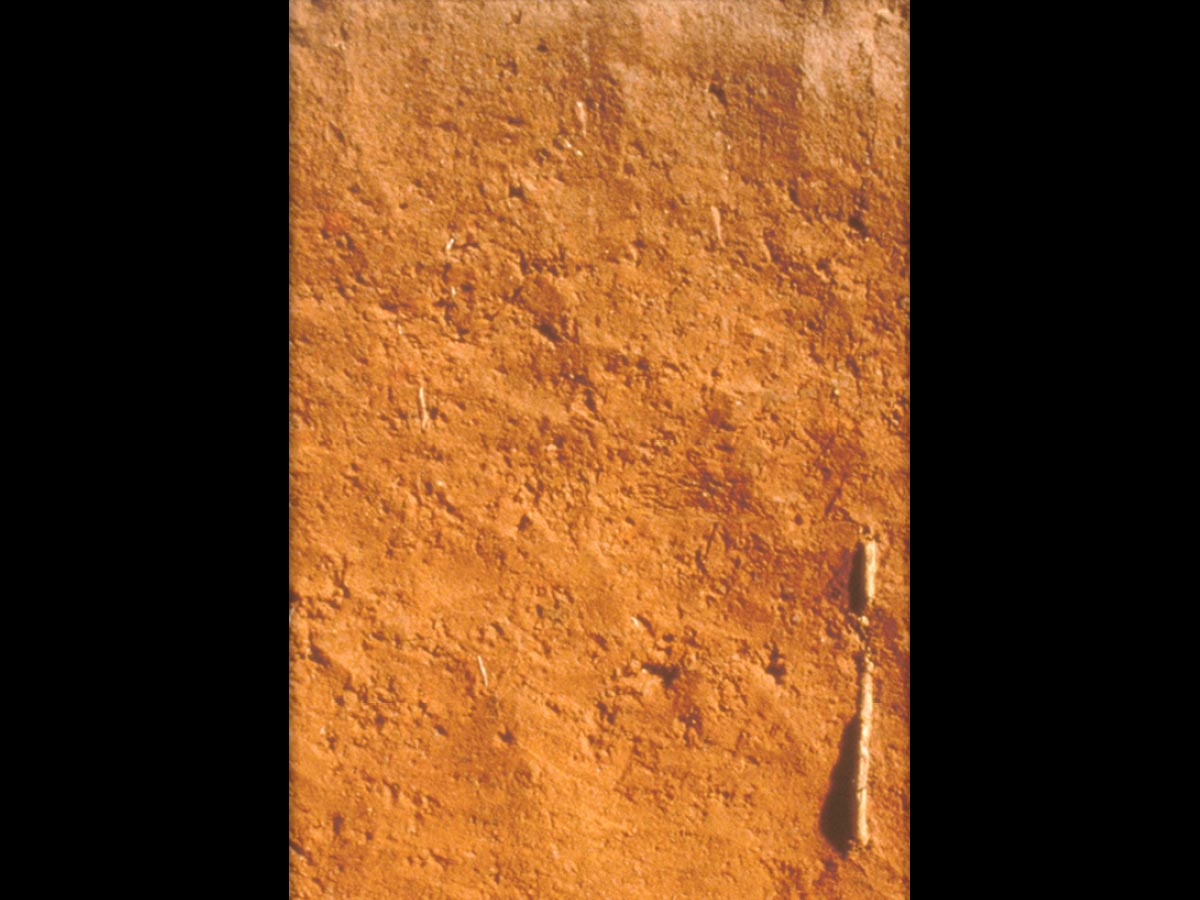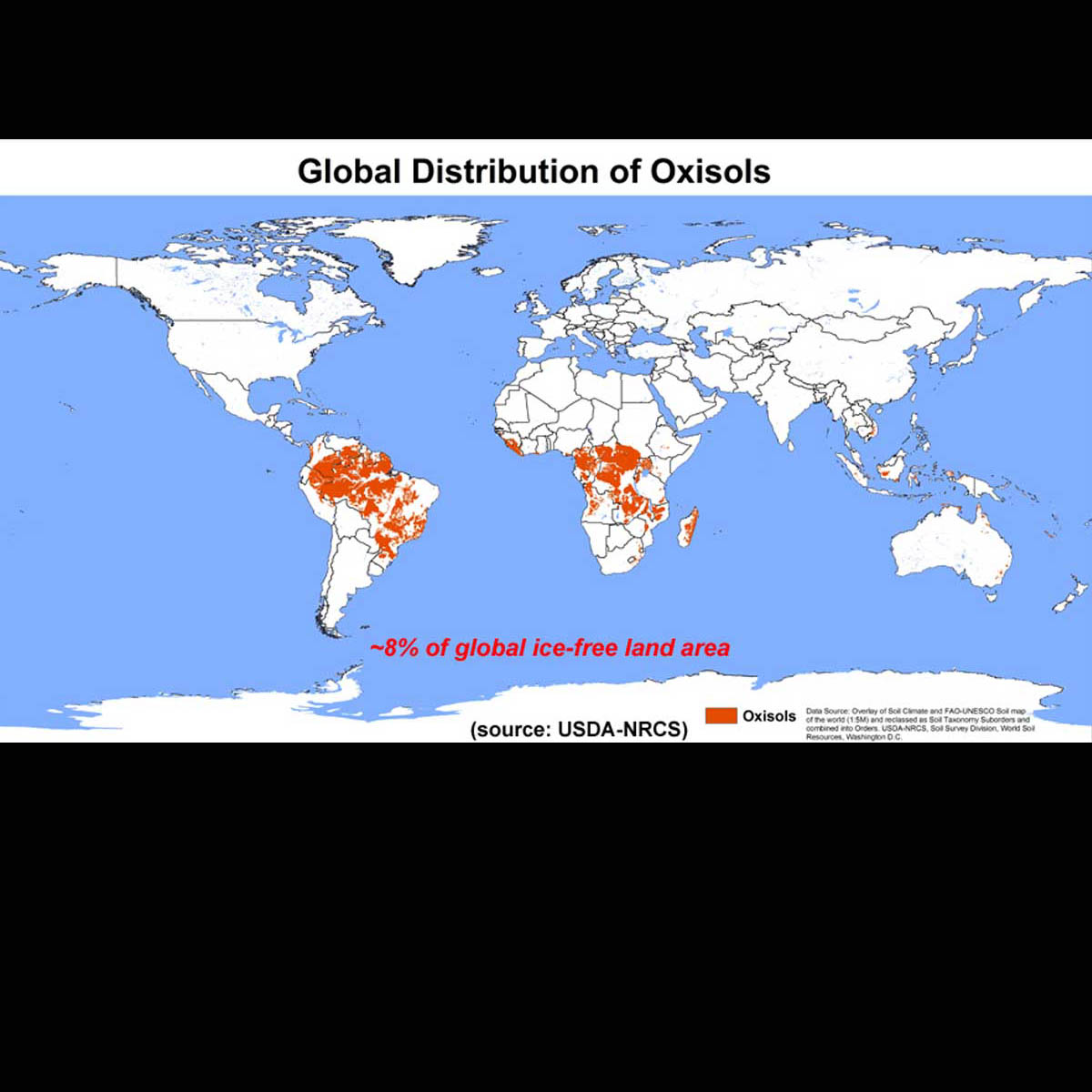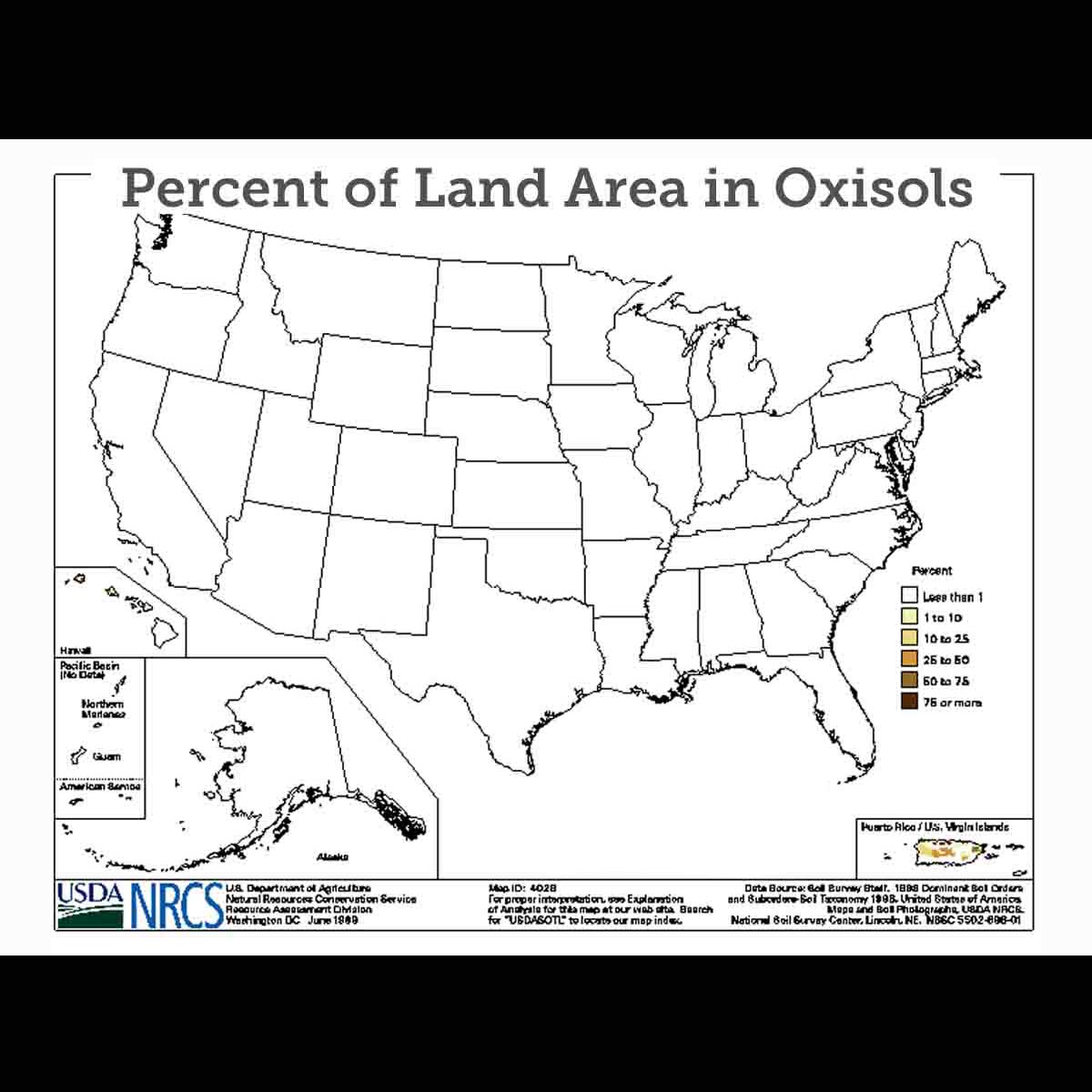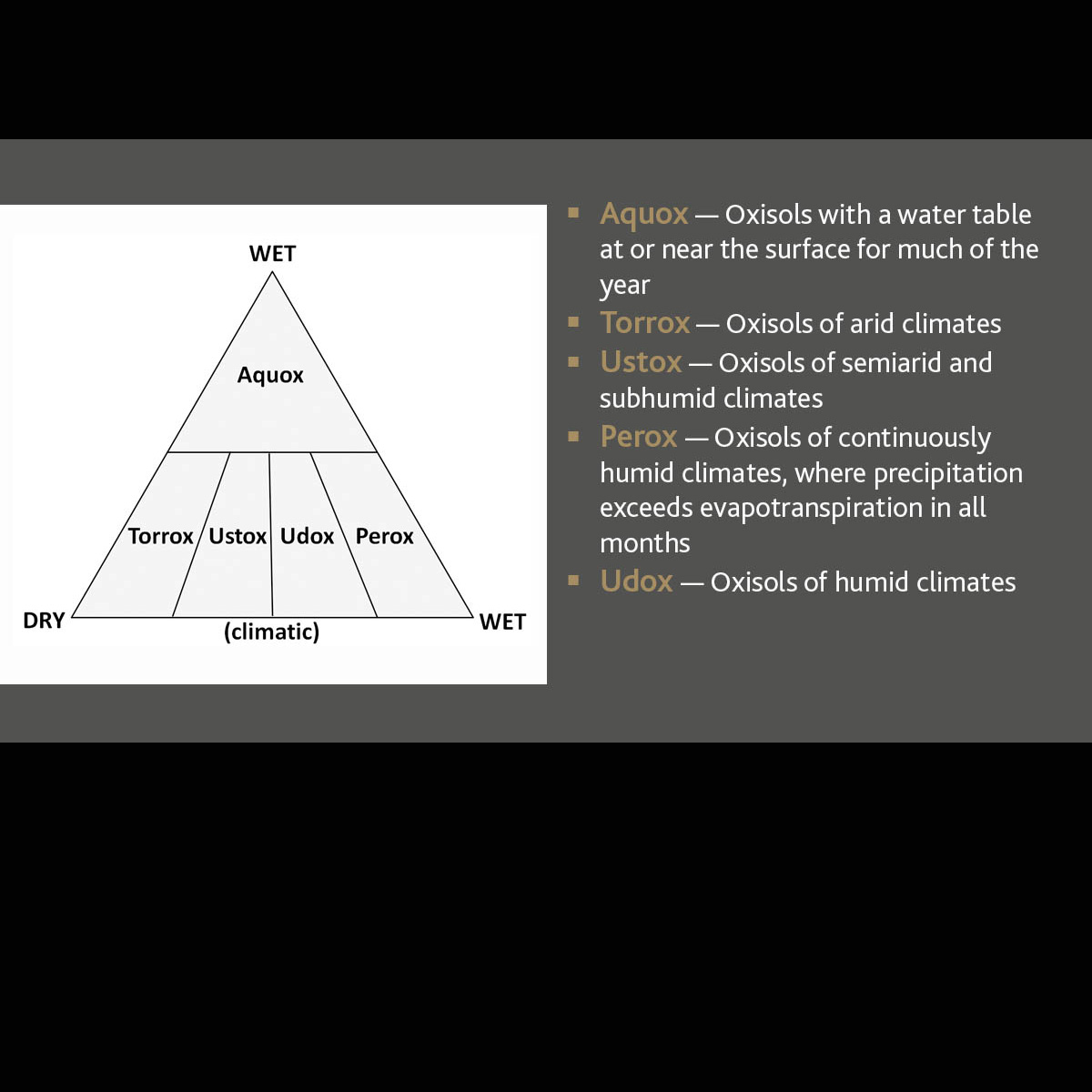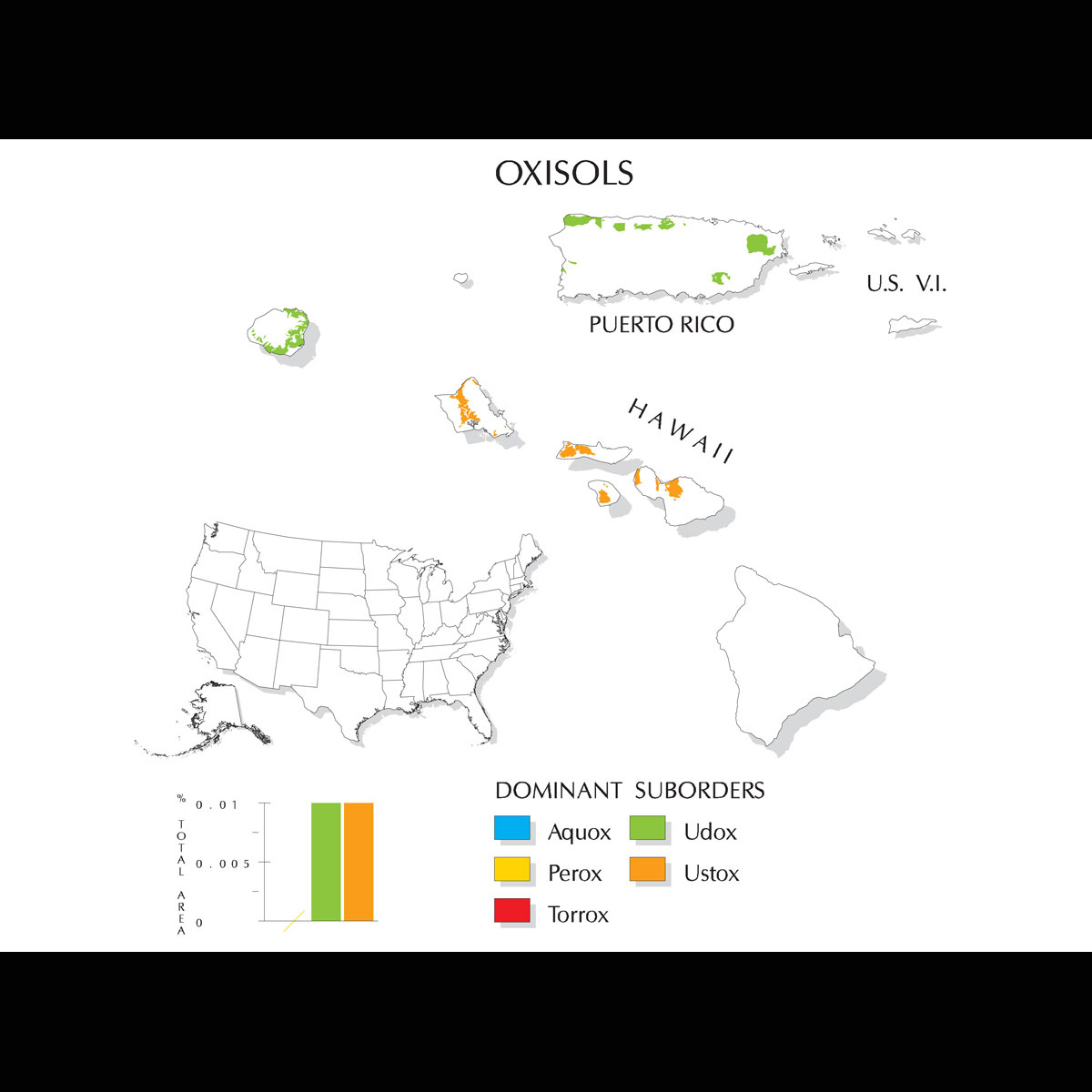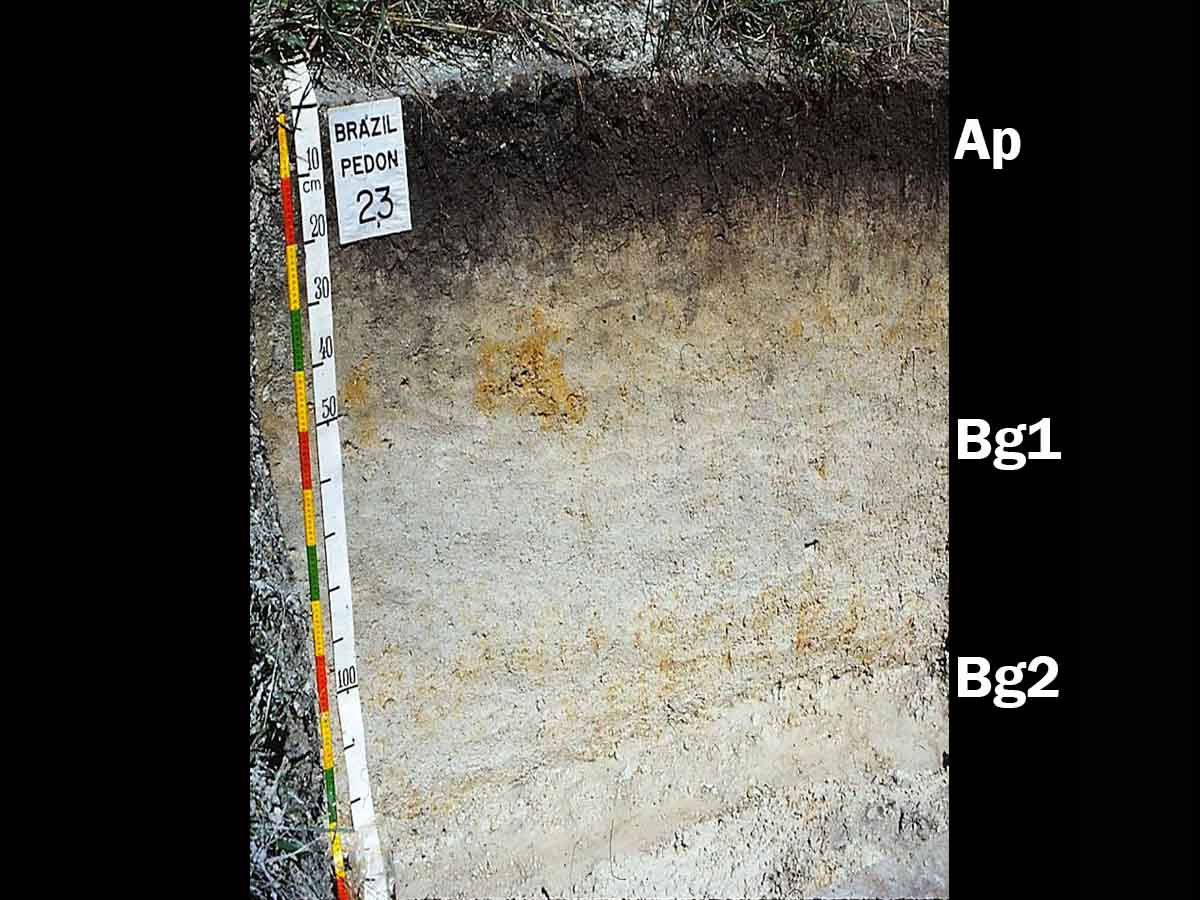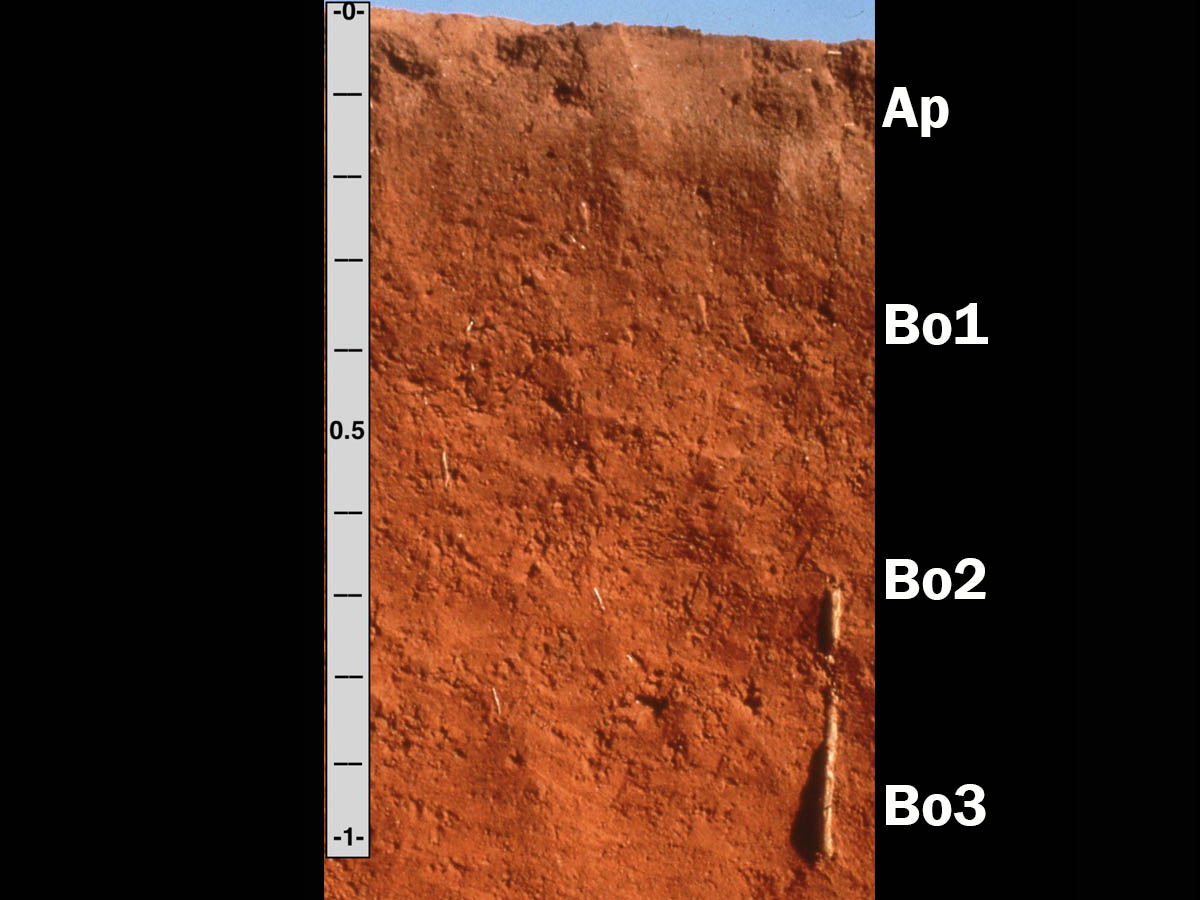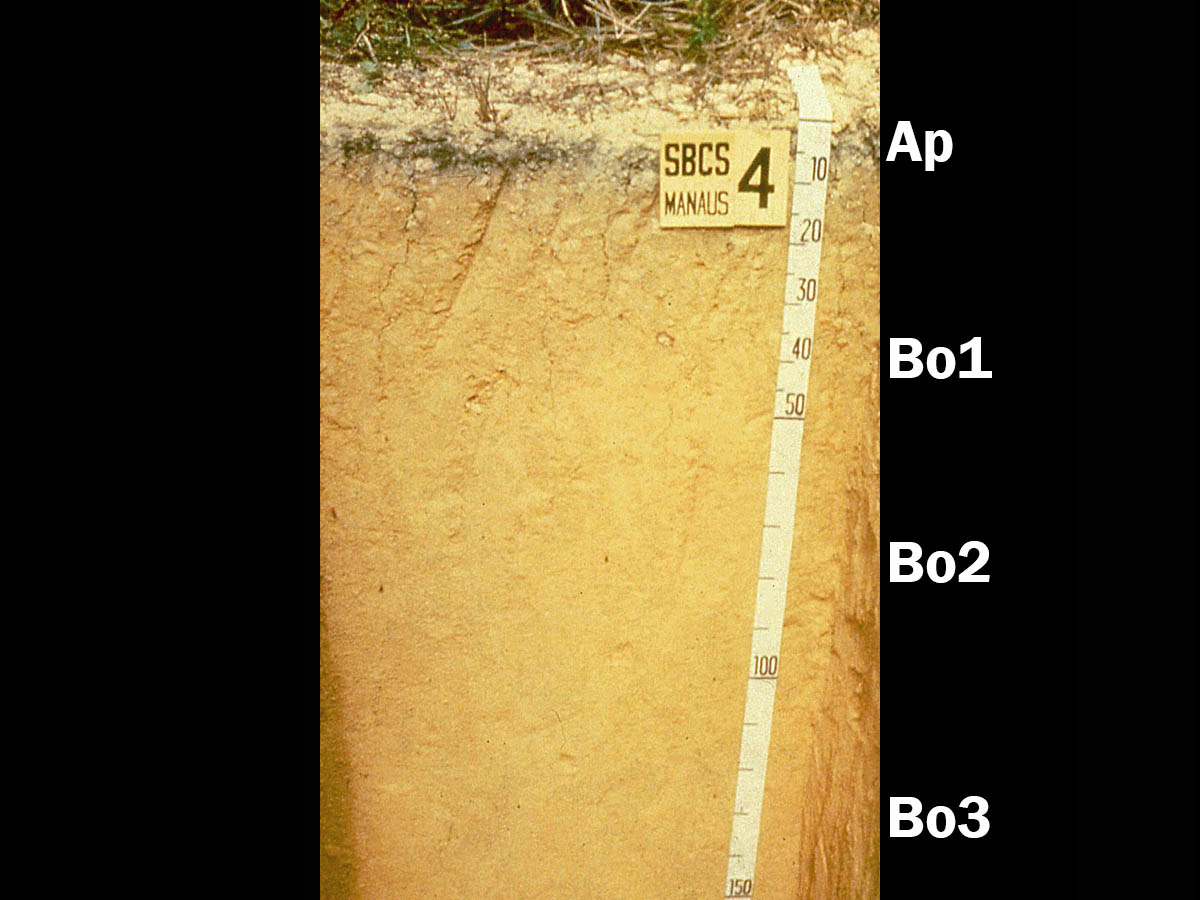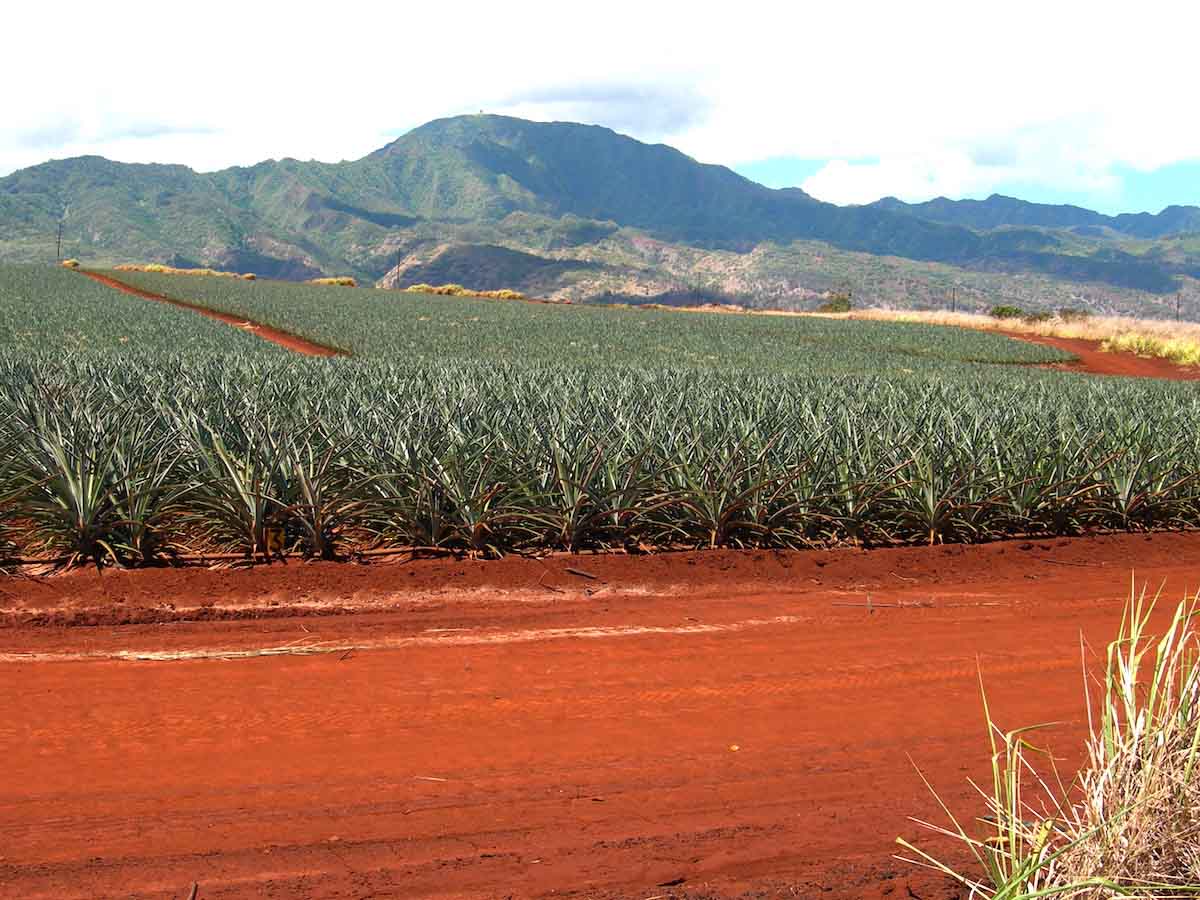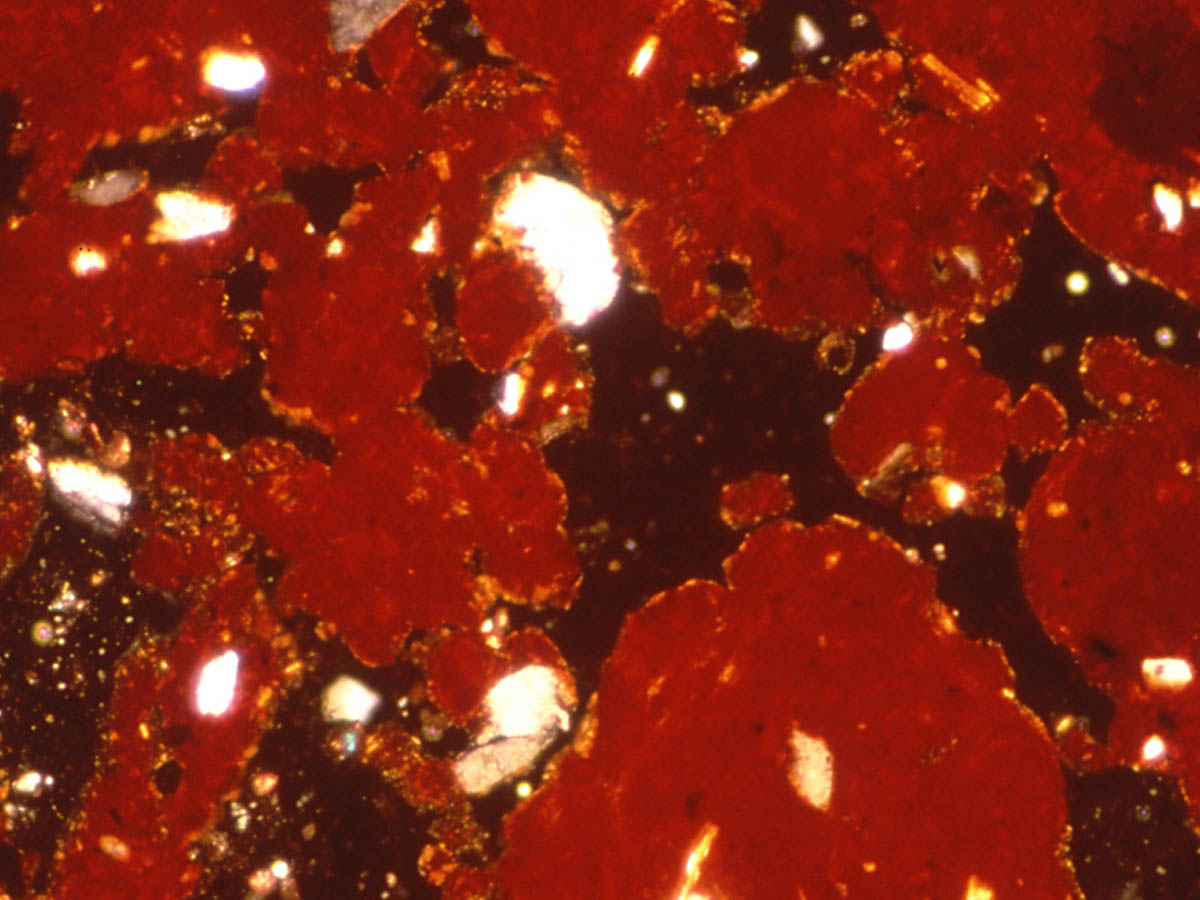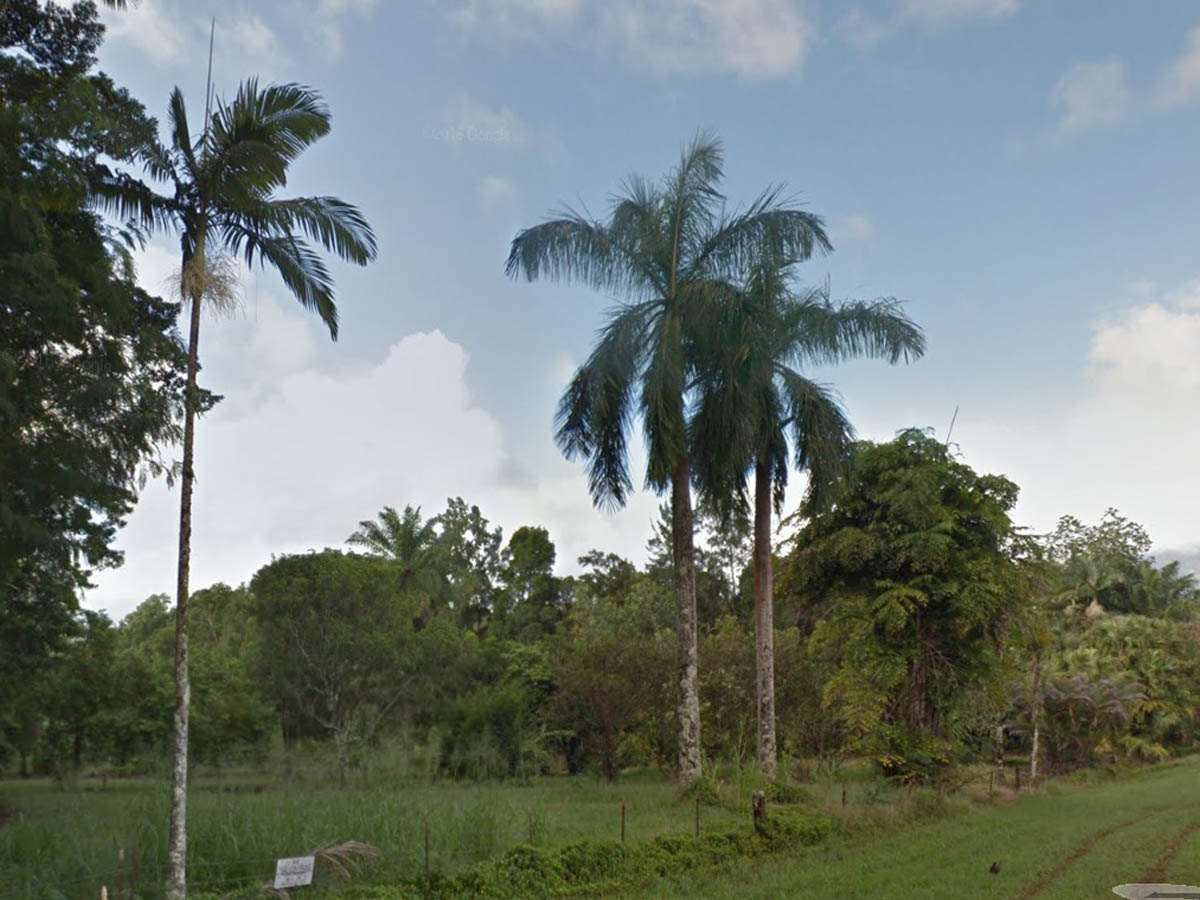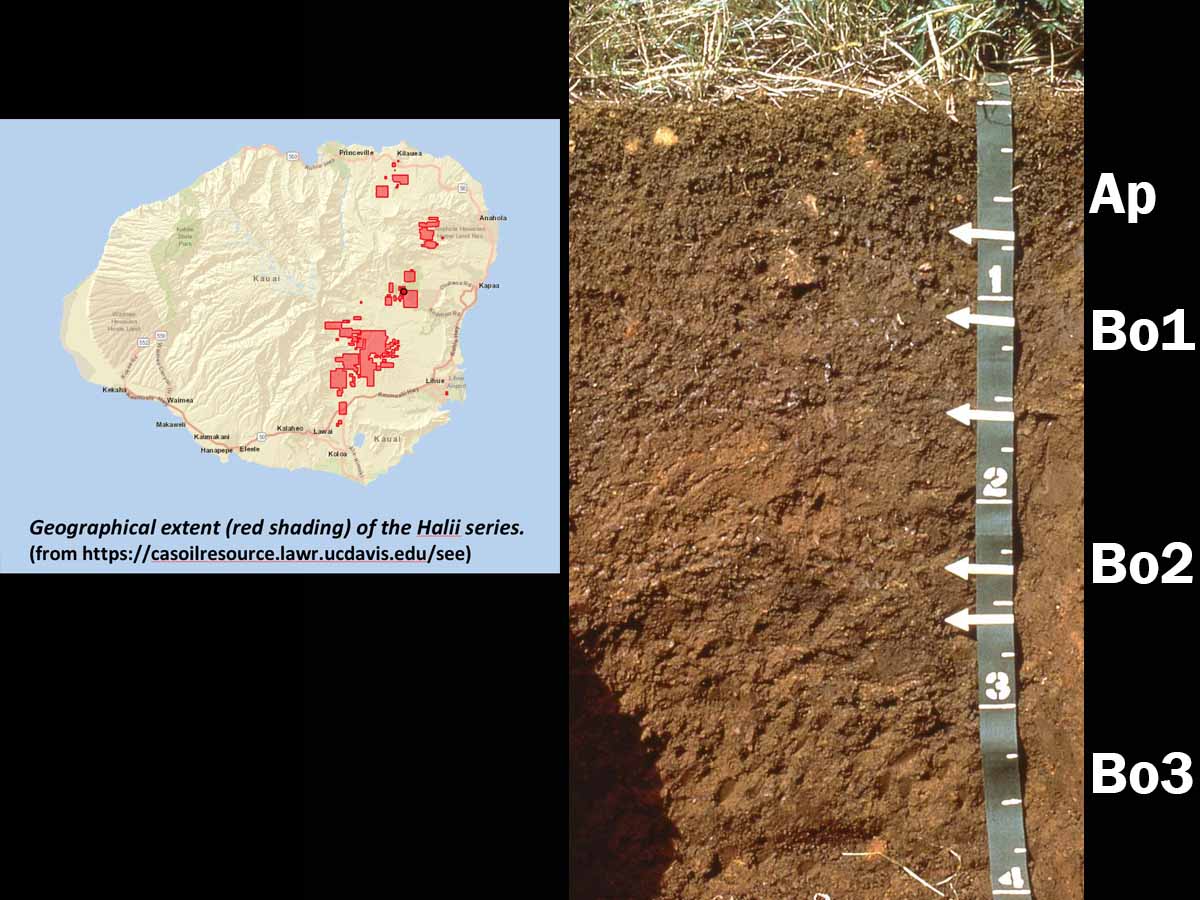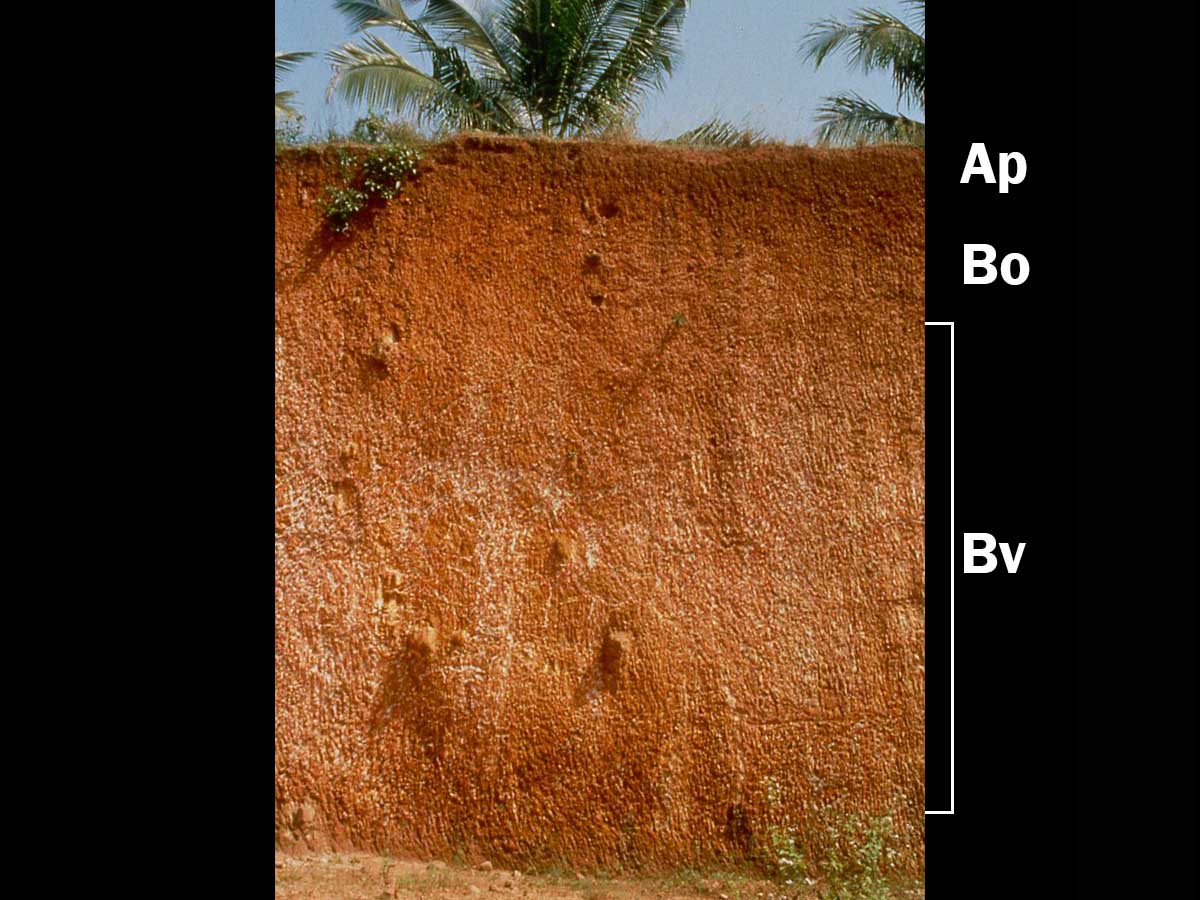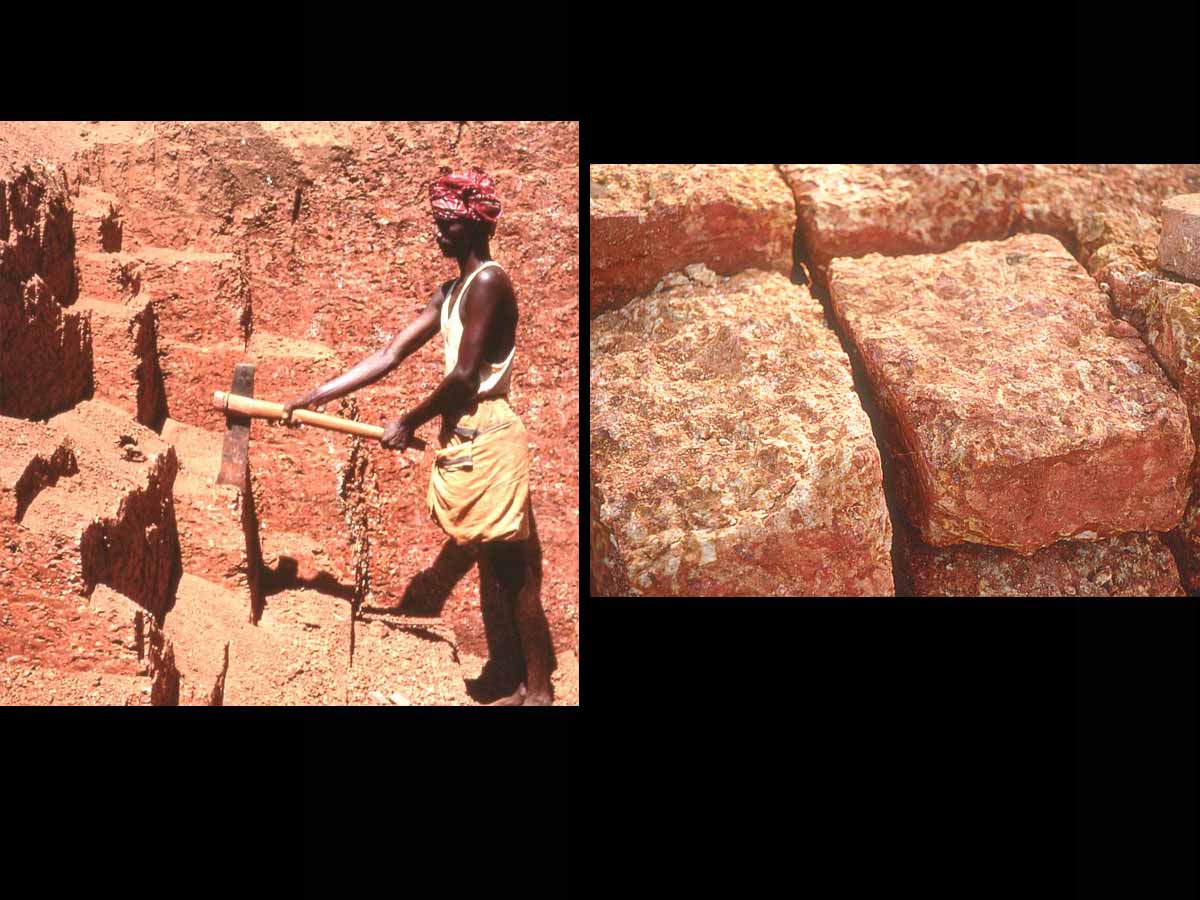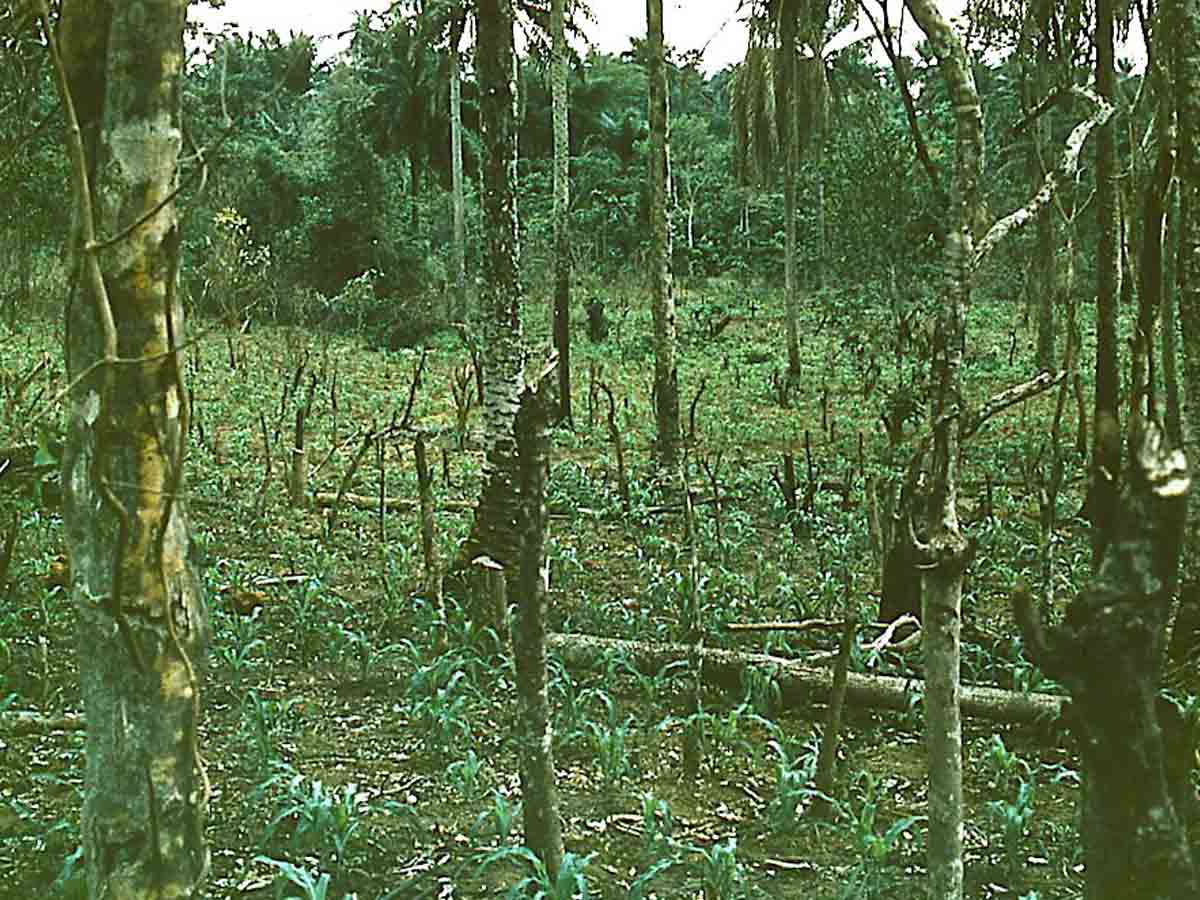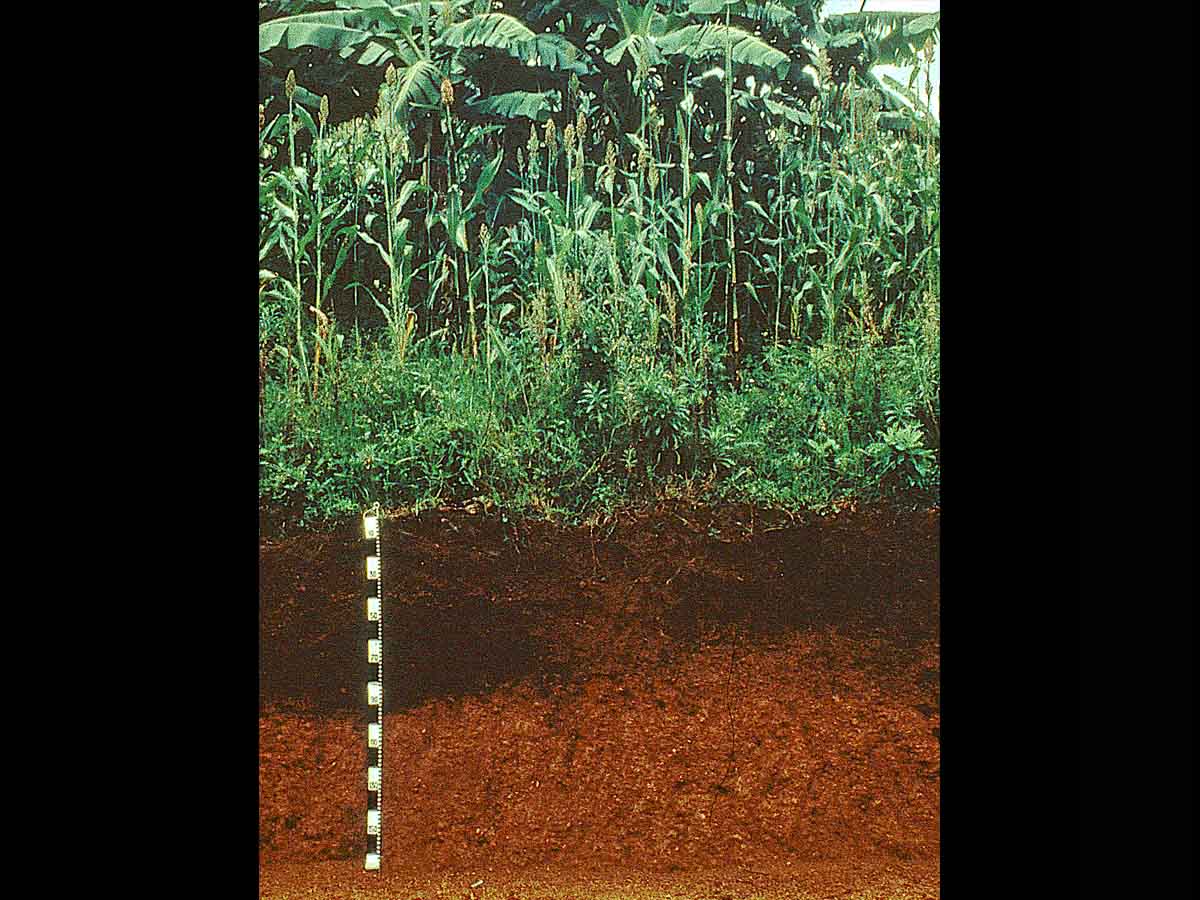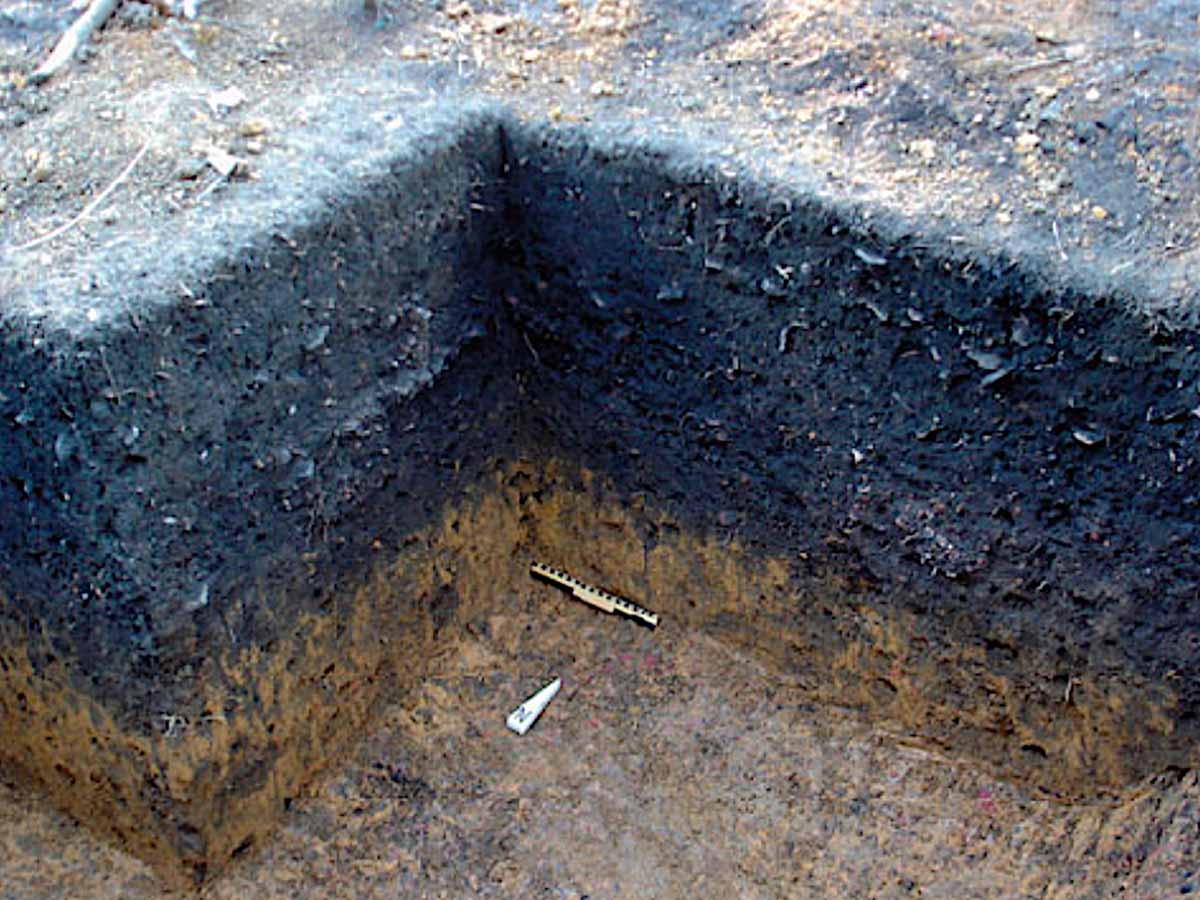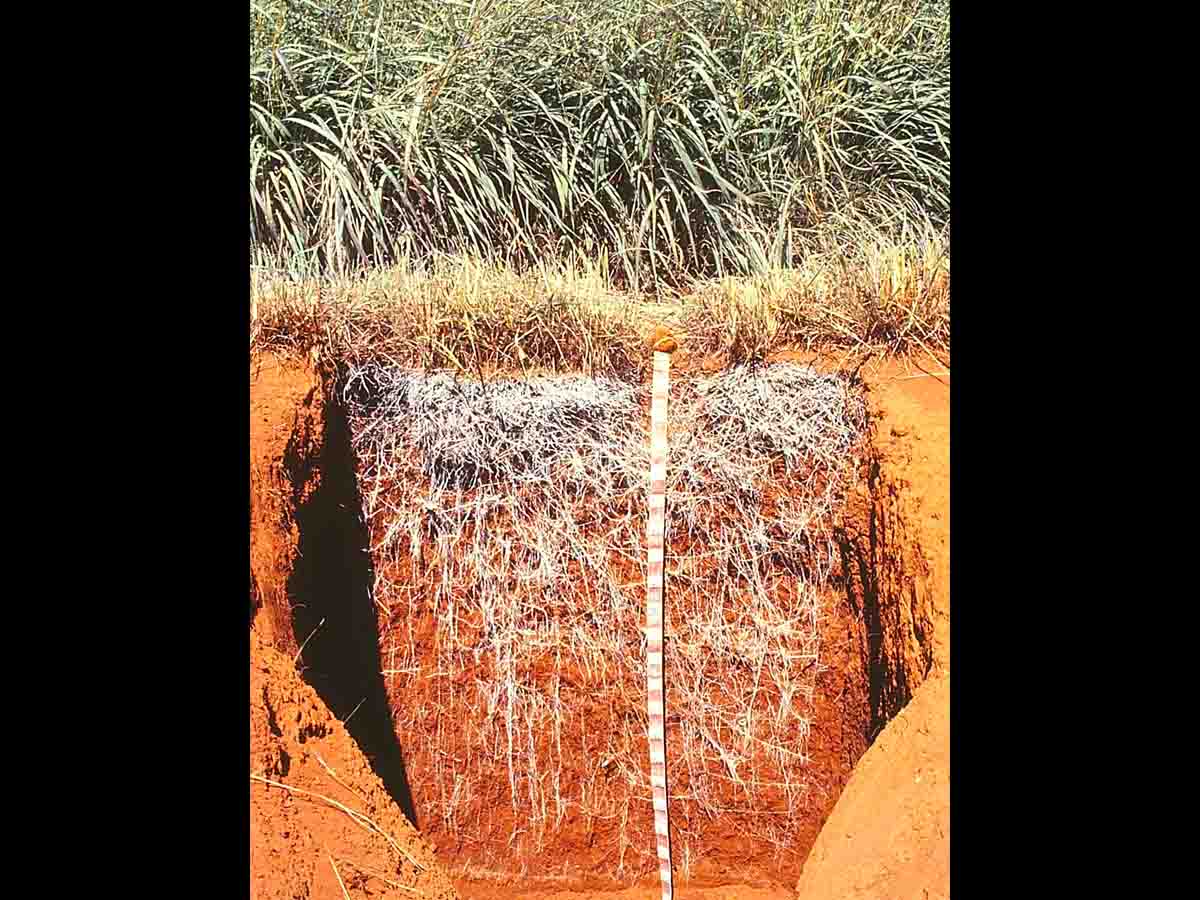Oxisols
Oxisols (from French oxide, "oxide") are very highly weathered soils that are found primarily in the intertropical regions of the world. These soils contain few weatherable minerals and are often rich in Fe and Al oxide minerals. Most of these soils are characterized by extremely low native fertility, resulting from very low nutrient reserves, high phosphorus retention by oxide minerals and low cation exchange capacity (CEC). Most nutrients in Oxisol ecosystems are contained in the standing vegetation and decomposing plant material. Despite low fertility, Oxisols can be quite productive with inputs of lime and fertilizers. The Oxisols are divided into five suborders: Aquox, Torrox, Ustox, Perox and Udox.
Oxisols occupy approximately 7.5% of the global ice-free land area. In the U.S., they only occupy approximately .02% of the land area and are restricted to Hawaii.








